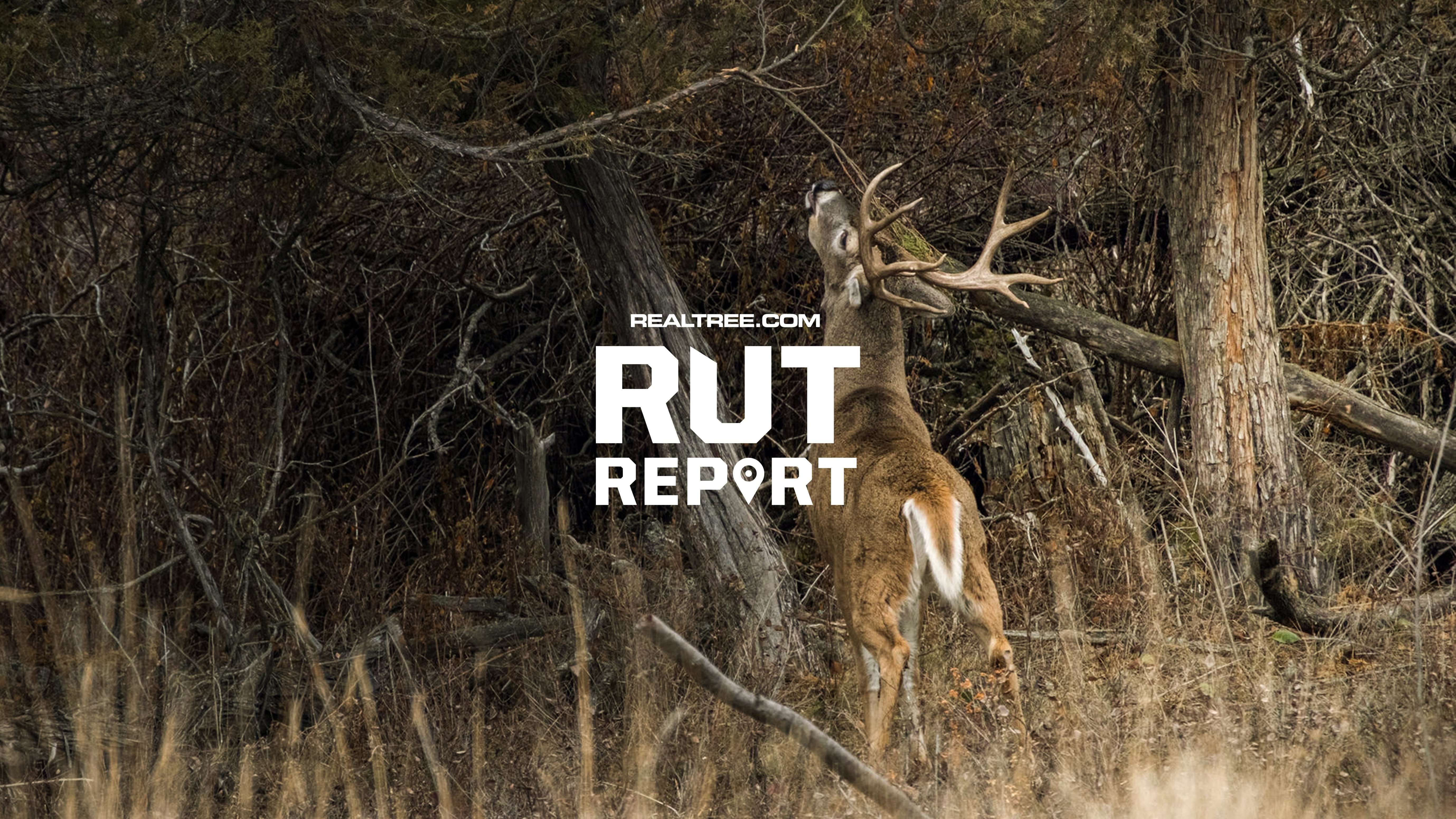From the Florida swamps to the Arkansas hardwoods to the Texas prairie, these tips will help put you on a southern gobbler
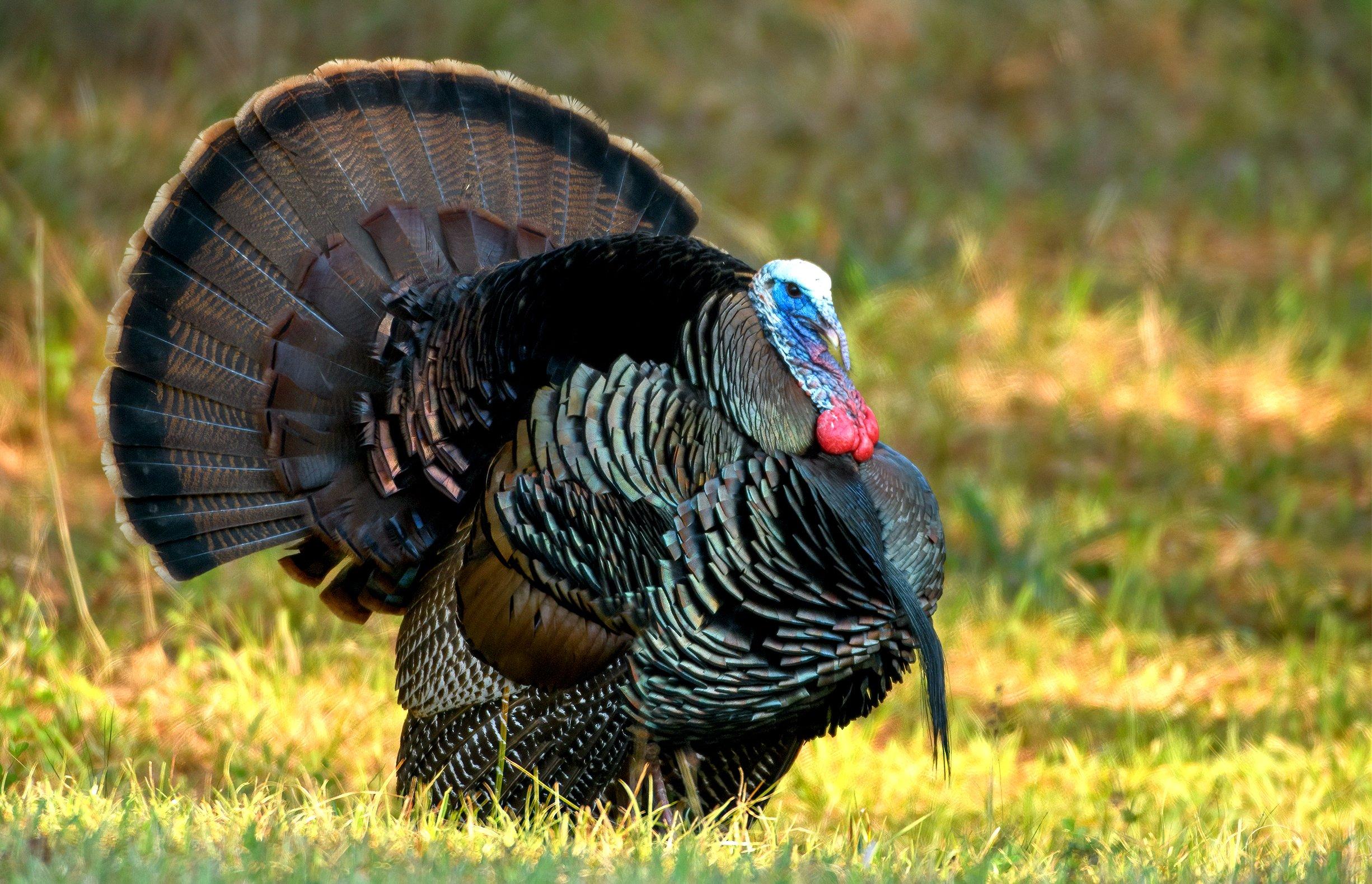
Wild turkey numbers have declined from historic peaks in the Southeast, but there’s still great hunting to be found throughout the region. Image by Tes Jolly
From the hills of Virginia to the swamps of Florida to the ranch lands of Texas, millions of us are fixing to stand shivering in the dark on opening morning, eager to hear the first booming gobble of spring. As we get ready to roll out of bed at 4 a.m. every day for the next four to six weeks, we wonder: Will there be a lot of turkeys where I hunt, or will it be a tough season? Any new hunting and calling tricks I should try? We cover that and more in this comprehensive guide to hunting wild turkeys south of the Mason-Dixon.
SOUTHERN TURKEY TIMELINE
In 1951, South Carolina biologist and hunter Herman Holbrook began experimenting with a new technique to live capture wild turkeys. Working on public land in the Lowcountry, Holbrook fired nets with a cannon and caught more than 200 birds of the Eastern subspecies, which were then transported and released into other parts of the state. To the biologist s delight, many of the transplanted hens began producing poults, and flocks grew in new areas. Other states across the South, and across the nation, took notice, and by the late 1950s biologists all over were cannoning nets, capturing turkeys, and releasing them into new habitats. The comeback of the wild turkey had begun!
Between 1951 and 1974 the U.S. turkey population grew from an estimated 320,000 birds to 1.5 million. Restoration efforts continued for decades, and by 2010, an estimated 6 million birds roamed the nation.
This remarkable conservation success led to the Golden Age of spring gobbler hunting in the Southeast. From the early 1980s to the mid-2000s, healthy and growing flocks of the Eastern birds made for phenomenal mornings in March and April from Virginia to Georgia to Mississippi. Some days you might hear five to 10 toms, or more, gobble on the roost. A newbie could scratch yelps on a box call and bring a longbeard running. States expanded seasons and increased bag limits.
Don’t Miss: The 2025 Southeast Region Turkey Hunting Forecast

Some states have adjusted bag limits and season dates, but that doesn’t mean southern hunters can’t still enjoy a great season. Image by Bill Konway
But with time, all wildlife populations ebb and flow.
We’ve documented ongoing declines for about the last 20 years in turkeys across the southeast, said Dr. Mike Chamberlain, a wild turkey expert and professor at the University of Georgia. Subsequently, gobbler harvests have gradually declined in some states. Georgia, for one, has pushed back the start date of spring turkey season in an effort to let gobblers breed as many hens as possible before they’re hunted. Other states have reduced bag limits. Many Southern turkey addicts, including me, have self-imposed a one-bird limit each season until populations fully rebound.
Biologists say loss of habitat, predation and disease have contributed to reduced numbers of turkeys, but, fingers crossed, we might be turning the corner. Realtree recently contacted biologists across the Southeast for their take on spring 2024 hunting prospects. State experts predicted good hunting in Mississippi, Arkansas, North Carolina, Virginia, and Tennessee; and fair to average calling in Florida, Georgia, Kentucky, and Oklahoma. Biologists in Alabama and South Carolina reported that hunting will remain challenging in many counties.
Don’t Miss: 10 Old-School Turkey Hunting Tips

Set up where a tom can strut in to your calls without encountering too many obstacles. Image by Bill Konway
SOUTHERN HEN RESEARCH
In hopes of reversing the decline of turkey numbers, wildlife experts are studying poult survival like never before.
A five-year Virginia study monitored the population dynamics of more than 1,000 radio-collared hens. Biologists found that hens three years of age and older produced 82 percent more poults than two-year-old hens. The results suggest that Southern flocks with the highest percentage of adult hens will grow the most birds from year to year.
For eight springs, researchers at North Carolina State monitored 715 turkey nests and collected daily precipitation and temperature data for each nest site during the incubation period. The most surprising finding was that extended rain during nesting did not affect the survival and hatching of eggs. They also found that the warmer the temperature in April, the better for egg incubation and, ultimately, poult survival and flock growth. Hope for a warmer than average spring in your area.
Don’t Miss: The Ultimate Turkey Gun Patterning Test
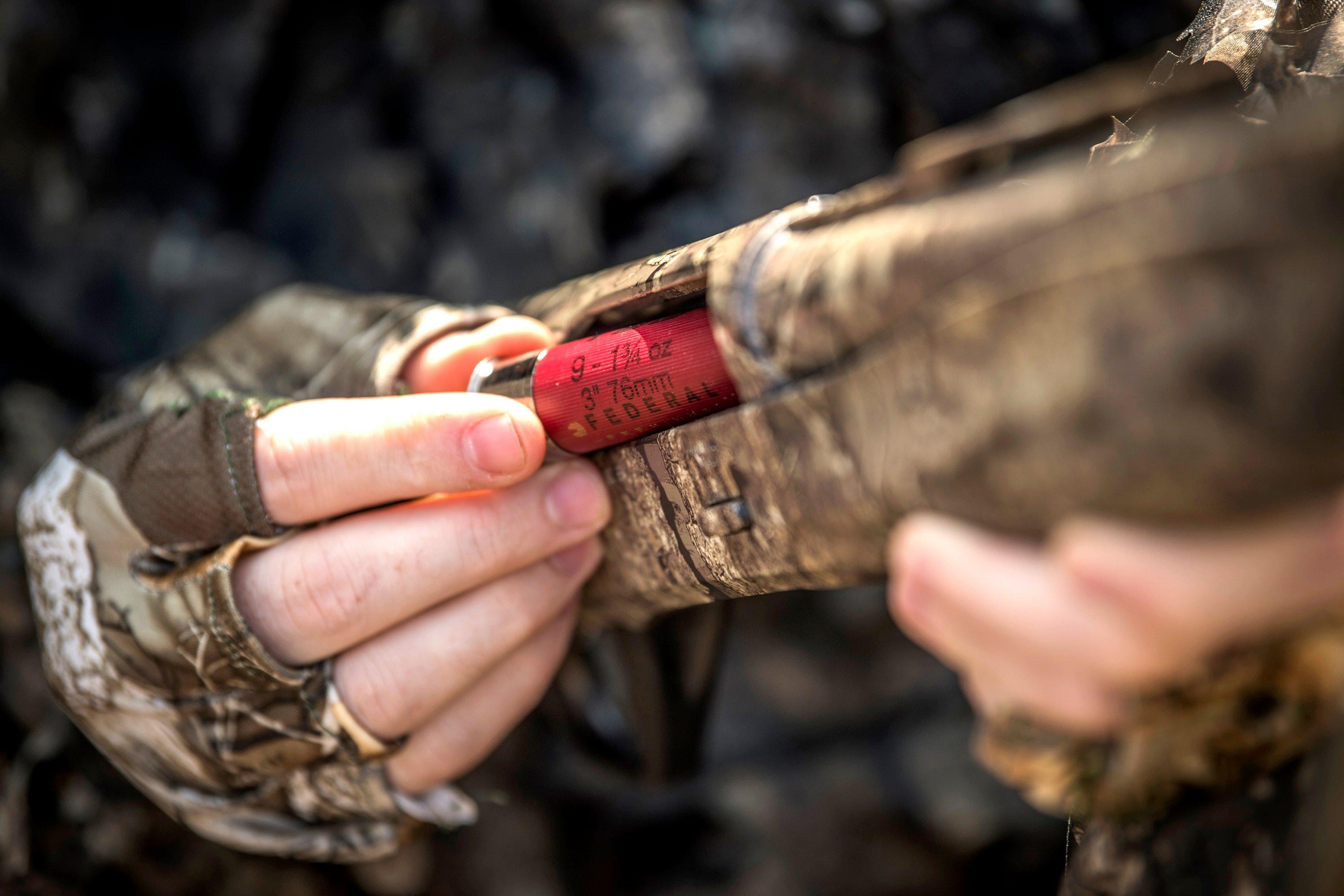
Some birds may never gobble, but will instead spit and drum into gun range, so listen for that. Image by Bill Konway
SOUTHERN TURKEY TRIVIA
The Eastern wild turkey, Meleagris gallapavo silvestris, was identified by a man named Vieillot in 1817, who used the word silvestris to convey “forest turkey.”
An Arkansan named Gibson patented the first box call in 1897.
Virginia held its first spring gobbler season in 1962.
In 1985, after 25 years of studying and recording hens and gobblers in the wild, Florida biologist Lovett Williams identified 28 distinctive calls in the wild turkey s vocabulary.
SOUTHERN TURKEY TACTICS
Early-Season: The golden rule to remember from day one and throughout the season: You won’t kill many gobblers if you sit and yelp in poor locations. The setup lays the foundation for working a turkey. As you move in on a gobbling bird, and before you ever call to him, look for a good place to set up. Try to pick a tree in a fairly flat area, where you can sit and see and shoot 40 yards out front and also to the left and right.
Your goal every time is to make it easy and convenient for a gobbler to work to your calls. Avoid overly thick, brushy ridges or bottoms; circle around and set up where a tom can strut to your calls through some open chute in the woods. When a turkey gobbles across a creek or deep gully, sneak over to his side before you sit and call. Whenever possible, select a tree that sits slightly above an open flat or bottom where you think a strutter might come in. Just an extra foot or two of elevation increases your visibility big-time as you peek for a gobbler responding to your calls.
Don’t Miss: Advanced Turkey Talk
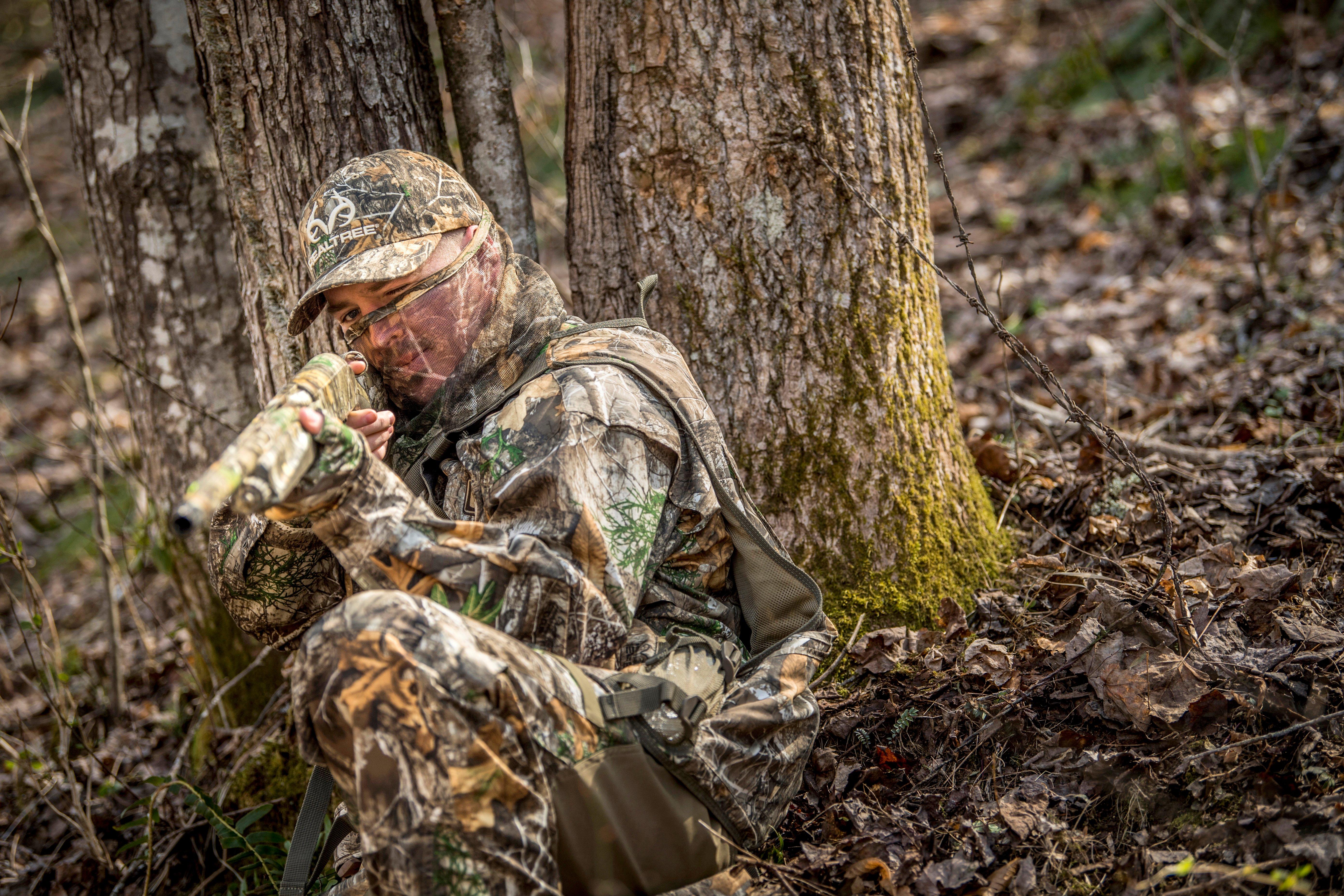
The key to your turkey hunting success is finding the perfect setup. Image by Bill Konway
Mid-Season: One day this season you’re apt to run across a bird I call a big strutter. He s been yelped to by others the last two weeks, and he’s leery to come to your hen calls. So, he struts and gobbles 150 yards or so away from setup. You call and he moves 20 yards your way, stops, gobbles in your direction and then marches defiantly back through the woods for another 100 yards or so. The gobbler is hung up in a long, linear strut zone. Here s how to trick him.
First off, sit, listen, and pattern the turkey as he struts back and forth. Let him come closer and strut back a couple of times to get a feel for his movements and how far he goes. Then, the next time the turkey comes to the front of his strut zone, get ready. As soon as he begins to walk back toward the far end of his zone, his going-away gobbles will tell you that, get up and move quickly 20 to 50 yards forward, yelping as you go. Find an open spot, sit down and get your gun up. Here’s the most important part, don’t call again.
As the gobbler struts away, he’ll hear your calls and think the hen (you) is finally coming around and moving toward him. When he turns and struts back, he might extend the front edge of his strut zone another 25 yards or so in hopes of running into the hen. He’ll run into you instead. Shoot straight!
Late-Season: My favorite time to hunt public ground in the Southeast is the last week of the season in April or May. Crowds of hunters subside with each passing day. Late in the breeding season, many gobblers have lost their hens, which have gone to sit on their nests. Longbeards go into one last gobbling frenzy as they try to hook up with the last receptive hens of spring. Cover lots of ground, driving the perimeters of a public area and hiking inner logging roads. Stop and listen often. Cutt and yelp from different locations. When you finally strike a lonesome gobbler, set up quickly, yelp and get ready, he’s probably coming.
Don’t Miss: You’re All-Season Guide to Using Turkey Decoys
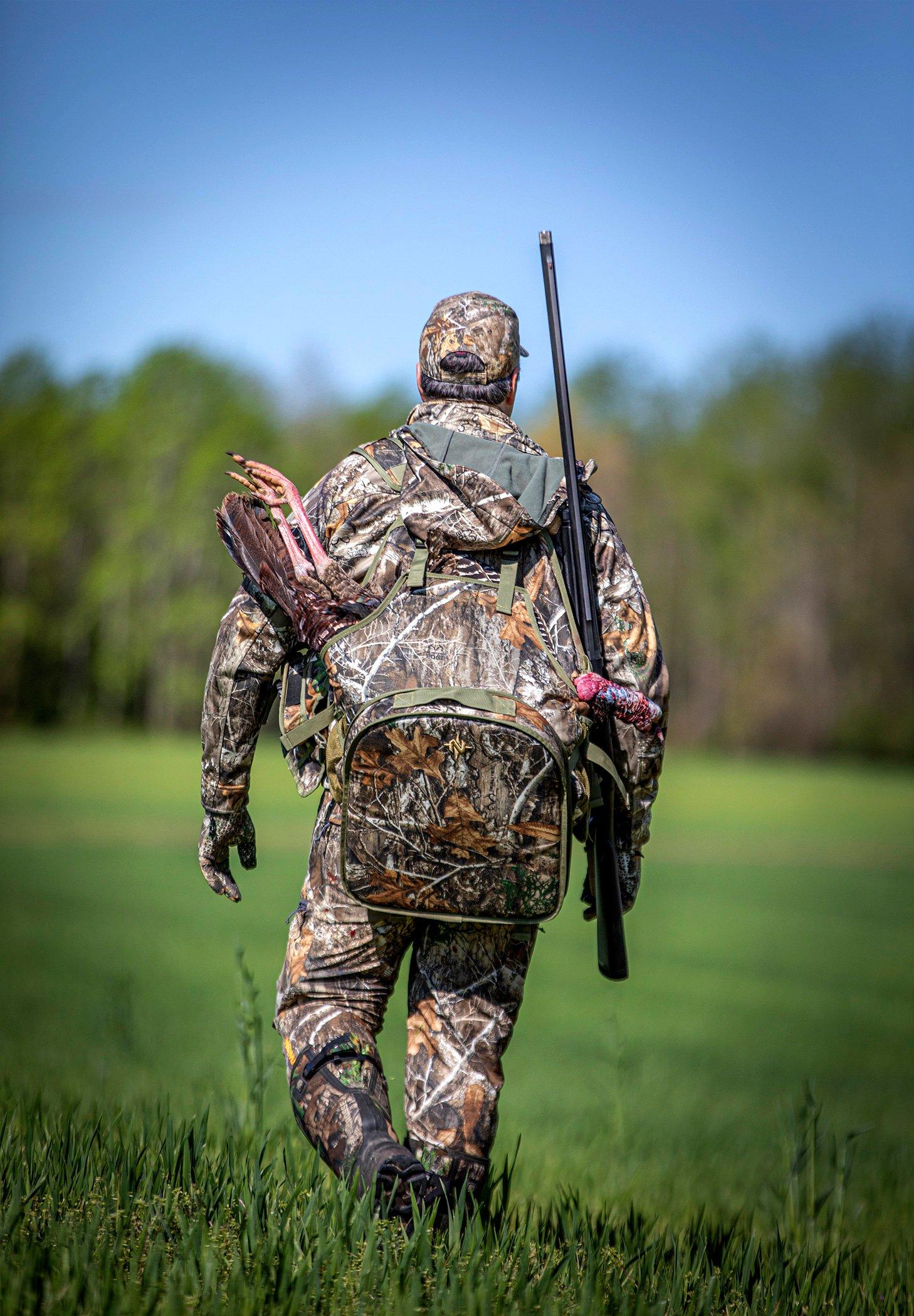
During the late season, cover lots of ground and stop and listen often. Image by Buzz Hayes
HUNTING THE OSCEOLA TURKEY
On a map of Florida, draw a line from the city of Jacksonville to the mouth of the Suwannee River, and then go due south to the Everglades. This is where you’ll find the pure strain of the Osceola subspecies of wild turkey, named after the famous Seminole chief who led his tribe in a bloody border war with the Americans in the early 1800s.
A streamlined version of the Eastern turkey, a mature Osceola tom weighs an average of 16 to 18 pounds in the spring. An Osceola gobbler s beard drags the ground, but it is thinner than an Eastern turkey s. Wading the swamps and walking on sand, a Florida gobbler does not rub off the tips of his spurs. A three-year-old gobbler s long, curved, bronze-tipped hooks are prized by hunters.
Many wildlife management areas in central and southern Florida offer decent turkey hunting. Private ranches with a mix of cypress swamps, pasturelands and oak hammocks offer the best opportunities.
- Osceola Hunting Tips
Osceola toms don’t gobble as much or as fervently as their Eastern kin. When a bird gobbles deep in a cypress swamp at daybreak, he sounds farther away than he really is. Don’t try to sneak too close. Set up on the edge of a pasture, or in the head of an oak hammock that juts out into a field, maybe 150 to 200 yards from a roosted tom. Set out three or four hen decoys, along with a fake jake. At first light the tom will often sail from his cypress roost and alight in a pasture to strut and gather hens. If he hears your yelps and sees your decoys, he might just strut over for a look.
In my experience Osceola gobblers respond best to soft clucks and yelps. Good strategy from 8 a.m. on is to build a little blind of palm fronds in a pasture, settle in and call seductively for a couple of hours. I’ve killed several longbeards that sneaked silently into my tiny yelps and clucks; those birds never gobbled, but they spit-and-drummed all the way into gun range, so listen for that.

Osceola toms don’t always gobble as much as Easterns do and often respond best to soft clucks and yelps. Image by Realtree
HUNTING THE RIO GRANDE TURKEY
Across Oklahoma and down into central and western Texas you’ll find the South’s third subspecies of wild turkey, the Rio Grande. These birds with buff-colored tail feathers inhabit grasslands dotted with scrub oaks and cedars, and plains and ranch lands with live oak trees and cacti. In these wide-open spaces, the turkeys travel far and wide, often comically running from place to place. While Rio Grande toms tend to talk more than Eastern toms, their gobbles sound softer and less lusty due to the acoustics of their open range.
- Rio Grande Hunting Tips
Good roosts are sometimes far and few between in open habitats. Scout for the tallest oaks, cottonwoods, or sycamores along rivers and streams. Beneath those trees you are apt to find a mother lode of tracks, feathers and droppings. In Texas you can sit in a grove of live oaks at dusk and have 25 or more Rios fly up all around you, yelping, cackling and gobbling.
When you run across a gobbling turkey, especially a strutter on the ground, give him a good dose of lively clucks, yelps, and the occasional cutt. If he gobbles back, keep calling to him. In my experience, if you tone down or quit calling to a Rio gobbler, there s a good chance he’ll lose interest, shut up and walk away.
Rio Grande turkeys used to have the reputation of being easy to hunt, but that’s changed. A three-year-old Rio tom can just as tough to call as an Eastern gobbler, especially if he’s been pressured. It pays to hang tough and hunt throughout the day. Cover lots of country and call aggressively, and you might strike a gobbler anytime. In late afternoon, head for a canyon or oak grove where you know turkeys roost. If there is a creek, stock tank or other water in the area, great. You might catch a breeding flock grabbing a drink before they head for roost. Lively calling can break a gobbler from the flock and bring him strutting into gun range.

Although they have the reputation of being easier to hunt, mature Rio Grande gobblers can be as tough to call as Easterns. Image by Russell Graves
GO-TO GEAR FOR SOUTHERN TURKEY HUNTING
Wear knee-high rubber boots when wading through creeks and swamps. From Texas to Florida, snake boots are smart. Calf-high boots also help keep the ticks away.
Temperatures will be in 80s or 90s many days, especially in late April and May, so wear lightweight Realtree camouflage.
If you hunt in the Deep South without a DEET-based bug repellent in your vest, you re crazy. Before a hunt, mist your pants, shirt, cap, and gloves. In bad buggy areas, carry a Thermacell.
In your vest, carry a variety of diaphragm and friction calls. On any given day, a gobbler might prefer trilling clucks and purrs or nasty, raspy notes. Carry and use five or six calls with different tones and rasp so you can give a gobbler the hen talk he likes.
Don’t Miss: How to Avoid the 4 Biggest Turkey Calling Mistakes





